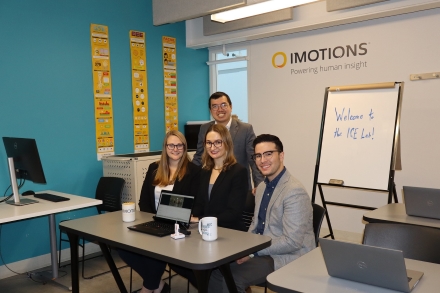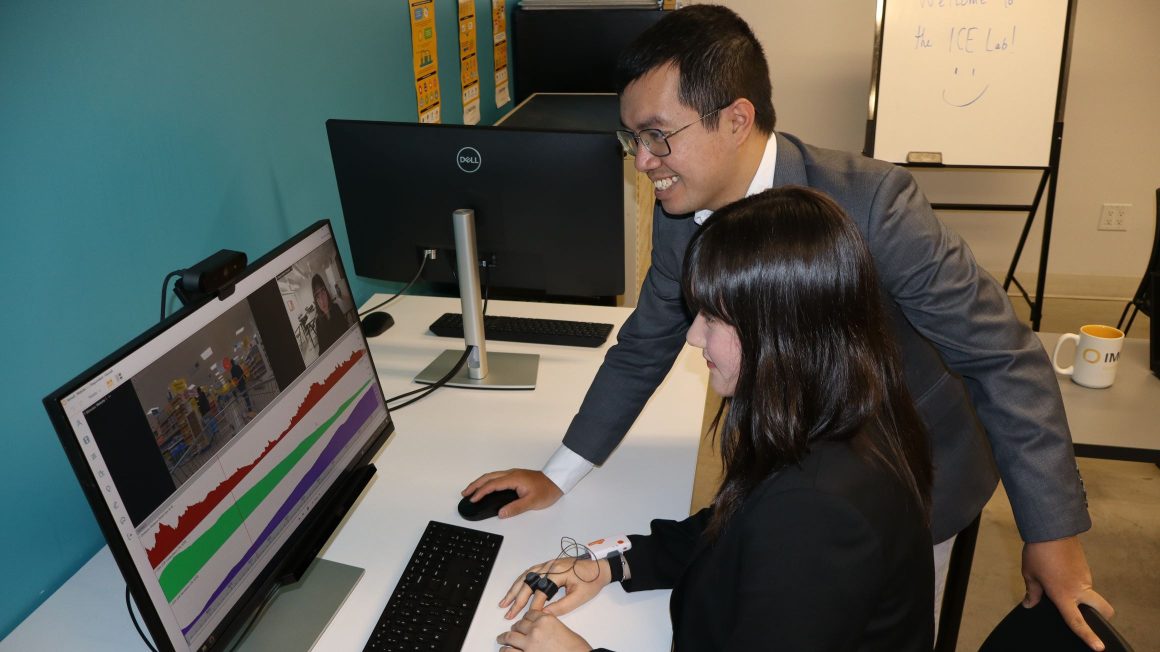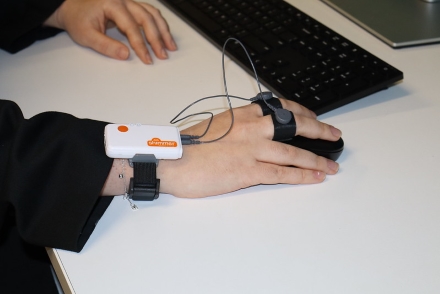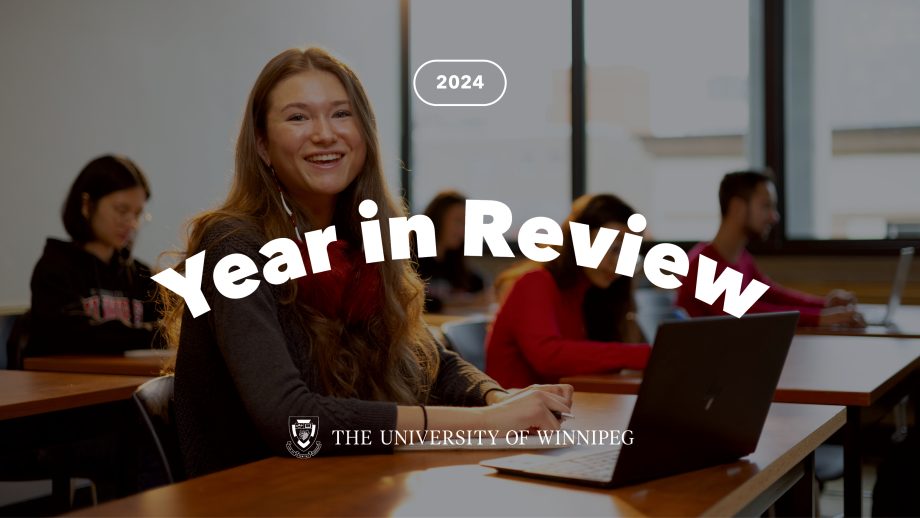From the flick of an eye to the twitch of a facial muscle, a cutting-edge new lab at The University of Winnipeg is capable of tracking the subtle emotions and split-second reactions that influence consumer decision-making in the marketplace.
The Interaction, Cognition, and Emotion (ICE) Lab is located in the Buhler Centre, home to UWinnipeg’s Faculty of Business and Economics.
The ICE Lab provides “real-time, millisecond-by-millisecond data on how you actually feel, what are you looking at, what are you paying attention to, and how you are feeling,” said Dr. Lam An, Assistant Professor of Marketing and Head of the ICE Lab.
For a survey you may have 200 or 300 data points; here you may have a million data points.
Dr. Lam An
The ICE Lab’s biometric hardware and software, which track eye movements, analyze facial expressions, and detect sweat levels, give students and researchers alike a taste of real-time complex data and how it drives decision-making.
“You can get a pretty comprehensive picture of what you’re paying attention to, what kind of emotion you’re feeling, and how strong you’re feeling it,” Dr. An said.
A media tracking company gave the lab biometric data from 10,000 TV-watching sessions, providing a window into what viewers are paying attention to and feeling during a given segment.
Funding and equipping the lab was a two-year process helped along by Dr. Hugh Grant, Professor and Dean of the Faculty of Business and Economics, generous funding partners, and volunteers.
The ICE Lab’s name isn’t just a handy acronym. It’s also a metaphor for the type of work carried out in it.
“Ice looks white, but when the light shines on it, it’s actually multiple colours,” Dr. An said. “Similarly, human nature, human behaviour, is very complex. We want this lab to shine a light on deeper human behaviour.”
A new tool in the toolkit
The ability to study real-time data on reactions and preferences is a boon to behavioural researchers, who used to primarily rely on surveys and focus groups to gauge the effectiveness of public messaging like advertising campaigns. Those methods, while still useful, are susceptible to social desirability bias, or the tendency for respondents to tell researchers what they think they want to hear.
“For a survey you may have 200 or 300 data points; here you may have a million data points, because everything is milliseconds and in real-time,” Dr. An said. “The students in my class are excited to go beyond survey research and focus groups interviews to learn how to analyze complex data sets, which is a very important skill for students nowadays.”
Since the fall, more than 200 Business and Economics students have already used the ICE Lab for academic research. Students in Dr. An’s marketing research class are now completing their final projects using the ICE Lab’s biometric tools to develop and test the effectiveness of their own advertising campaigns.
A group of UWinnipeg Business and Economics students recently finished second in a national business analytics competition. Dr. An said the ICE Lab will help the University to continue to train future business leaders in a data-driven world.
Where the data meets the road
Data-based behavioural research is useful to the private and public sectors. A grocer may use it to determine optimal product placement in supermarkets, while a government might turn to it to design an ad campaign to reduce rates of impaired driving.
Dr. An, whose research focuses on the art of persuasion in the marketplace, is using the ICE Lab to examine sustainability behaviours like recycling.

Dr. Lam An with colleagues Dr. Sara Murphy, Dr. Olya Bryksina, and Dr. Jose Espinoza in the ICE Lab.
“In a survey, they’re always going to say yes, but now we can actually see, are they paying attention, are they excited to recycle?” he said. “The goal is to improve sustainable behaviours, and explore what really motivates people to adopt renewable energies and sustainable solutions in their household.”
Dr. An and a colleague, Dr. Sarah Murphy, are also researching equity and bias in the hiring process.
“We want to see what hiring managers are looking at, whether they are being judgmental or stereotyping when they look at job candidates’ social media profiles,” Dr. An explained. “They’re never going to say that out loud, but these tools allow us to explore deeper emotions and feeling, and from there design fairer and more equitable job search process, for the recruiter and for applicants.”
Any UWinnipeg researcher can use the ICE Lab. For more information, or to inquire about research collaboration opportunities, visit the ICE Lab website.
“We would love to collaborate with other faculty on interdisciplinary research,” Dr. An said.






